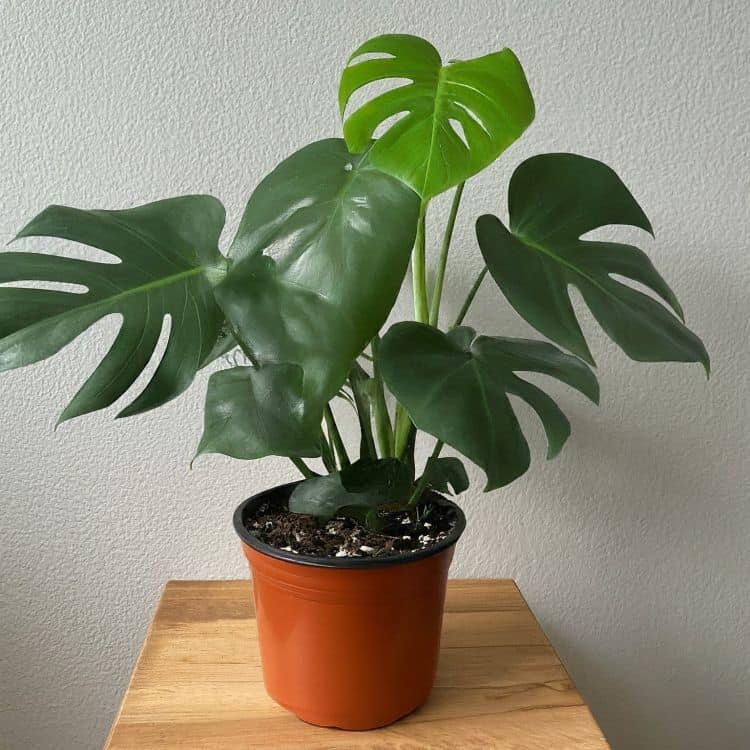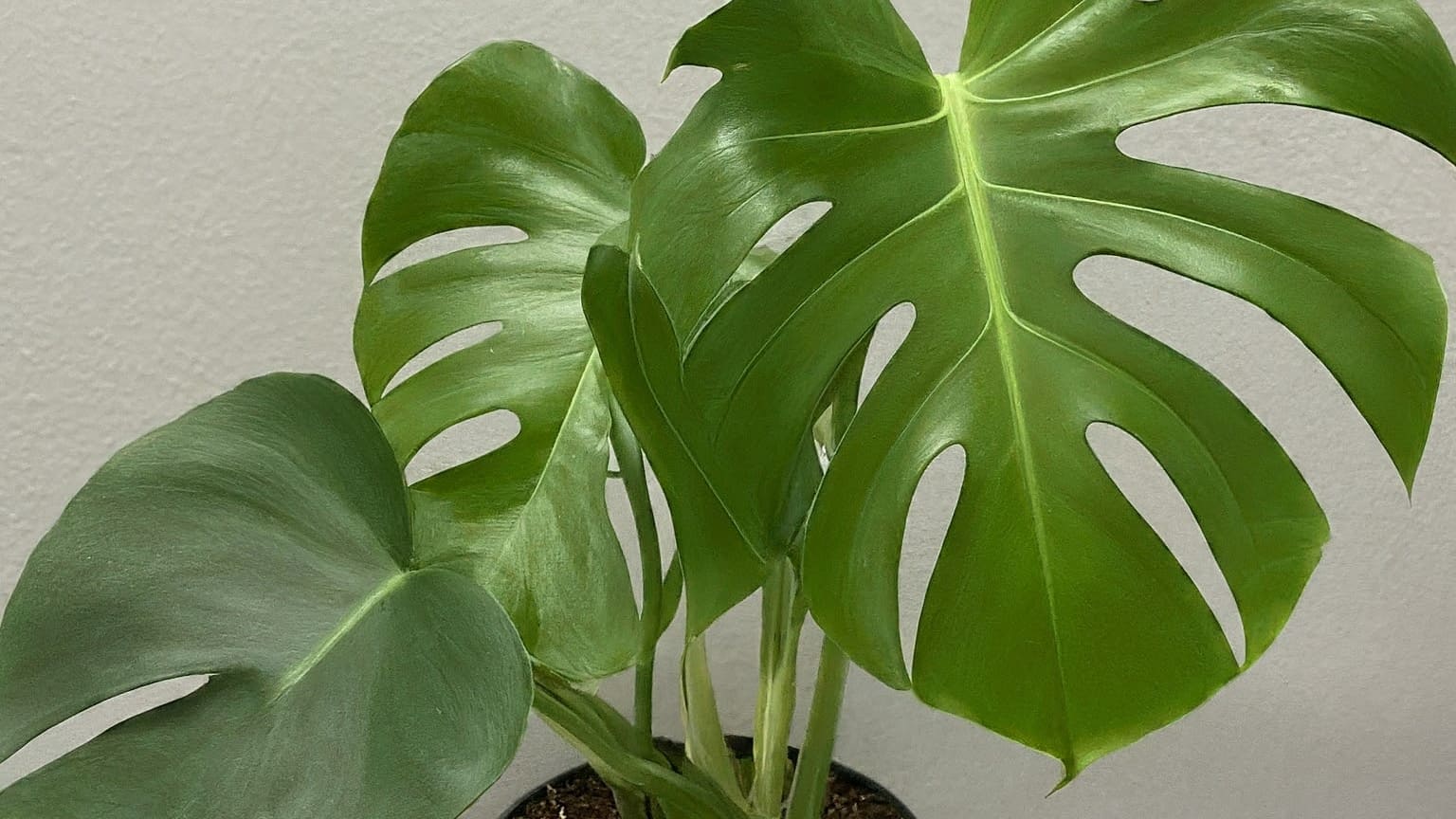Last updated on May 7th, 2024 at 09:54 am
Exploring the world of indoor gardening, few plants capture the imagination like the Monstera deliciosa. With its unique Swiss cheese-like leaves and tropical charm, it’s a favorite in modern home decor. But beyond its beauty, there’s a fascinating side to caring for and multiplying these plants. The Monstera plant, also known as the Swiss cheese plant, Mexican breadfruit, or hurricane plant, hails from Central America. It gained popularity in the US during the 1950s for its lush foliage and easy care. Nowadays, they’re found in many places that sell tropical houseplants, with solid green leaves being common and variegated ones being rarer.
Keep in mind, that not every cutting will grow – that’s just how nature works! So, while this guide offers tips, be sure to do your research and consider your environment before trying to propagate. If you’re a plant lover, chances are you have a Monstera Deliciosa in your collection. They grow fast, so many people trim them to keep them in check. But instead of throwing away those cuttings, you can easily make new plants from them.
It’s surprisingly simple to propagate Monstera Deliciosa, so you could soon have even more plants to enjoy. To help you get started, we’ve put together an easy-to-follow guide for successfully propagating your Monstera Deliciosa plants.
Contents
- 1 Understanding Monstera as a Tropical Marvel
- 2 5 Easy Monstera Care Tips for Healthy Plants
- 3 4 Secrets of Monstera Plant Propagation:
- 4 Monstera Deliciosa Plant Propagation Process
- 5 FAQs
- 5.1 Can I propagate my Monstera plant without using the rooting hormone?
- 5.2 How long does it take for Monstera cuttings to root?
- 5.3 Can I propagate my monstera deliciosa Swiss cheese plant in water?
- 5.4 What is the best time of year to propagate Monstera plants?
- 5.5 How often should I fertilize my propagated Monstera plants?
- 6 Care and Propagation Tips
- 7 Author
Understanding Monstera as a Tropical Marvel
Originating from the lush tropical rainforests of Central and South America, the Monstera deliciosa, commonly known as the Swiss cheese plant or split-leaf philodendron, is a botanical marvel that thrives in warm, humid environments. Its grandeur lies in its large, glossy leaves, adorned with distinctive splits and holes that not only enhance its visual allure but also serve a vital purpose in its natural habitat. These unique leaf formations are not merely ornamental; they facilitate the plant’s survival by allowing excess rainfall to permeate through, preventing water from accumulating and potentially weighing down the plant or causing damage.
5 Easy Monstera Care Tips for Healthy Plants

Monstera plants, including the popular Monstera deliciosa, are native to tropical areas in Central and South America, where they thrive in the humid undergrowth of rainforests. While most care advice focuses on Monstera deliciosa, other Monstera types such as Monstera adansonii and Monstera obliqua also share similar needs, making them equally suitable choices for beginners looking to cultivate these iconic plants.
Light
monstera deliciosa Swiss cheese plant thrives in bright, indirect sunlight, similar to the dappled light found under trees in their natural habitat. They can tolerate low to medium light levels, but insufficient light may cause leggy growth. However, varieties with extensive variegation require protection from intense sunlight to prevent leaf damage.
Soil
Opt for well-draining organic soil to promote healthy root development in Monstera plants. Incorporating materials like charcoal, bark, or perlite into the soil mix enhances drainage, reducing the risk of waterlogged conditions and root rot.
Water
Maintain even moisture levels in the soil of your Monstera by watering when the top inch or so feels dry. Avoid overwatering, as soggy soil can lead to root rot. Instead, allow excess water to drain freely from the pot, ensuring adequate aeration for the roots.
Temperature and Humidity
Monstera plants thrive in temperatures above 60°F and appreciate moderate to high humidity levels. Warmer, more humid environments encourage robust growth, but temperatures exceeding 85°F, especially in direct sunlight, can stress the plant. To enhance humidity, mist the leaves daily or place the pot above a tray filled with water. However, avoid allowing the pot to sit directly in water to prevent root rot.
Fertilizer
Regular fertilization supports healthy growth and vibrant foliage in the Monstera deliciosa Swiss cheese plant. Dilute a balanced houseplant fertilizer to half strength and apply it monthly during the growing season. Reduce fertilization frequency during the winter months when plant growth naturally slows.
4 Secrets of Monstera Plant Propagation:

Monstera propagation is an exciting aspect of caring for these plants, allowing enthusiasts to expand their collection and share the joy of growing with others. Here are four popular methods for propagating monstera deliciosa Swiss cheese plants:
Stem Cuttings
This method involves snipping a healthy stem with at least one node, where a leaf meets the stem. The cutting is then placed in water or moist soil, ensuring that the node is submerged. Within a few weeks, roots should begin to develop, signaling that the cutting is ready to be transplanted into a pot with well-draining soil.
Aerial Roots
Monstera plants naturally develop aerial roots, which they use to cling to trees in their native habitat. These roots can also be utilized for propagation. To propagate using aerial roots, select a healthy stem with visible aerial roots and gently detach it from the main plant. Plant the stem in moist soil, burying the aerial roots, and provide it with the same care as a rooted cutting.
Layering
Layering is another propagation method that involves encouraging a stem to develop roots while still attached to the parent plant. To do this, make a small incision in a healthy stem and apply the rooting hormone to the exposed area. Then, gently bend the stem and secure it in place with a stake or twist tie. Over time, roots will grow at the incision site, and once roots grow, the rooted portion of the plant can be divided from the parent plant and pot separately.
Division
If your monstera deliciosa Swiss cheese plant has multiple stems or offshoots, you can propagate it through division. Carefully remove the plant from its pot and separate the individual stems, ensuring that each division has its roots. Then, replant the divisions in separate pots with fresh soil, providing them with appropriate care to encourage root establishment and growth.
Monstera Deliciosa Plant Propagation Process
Trimming the Stem
Carefully trim the selected stem with sharp shears or scissors, ensuring it includes a leaf node or an aerial root along with the leaves. After cutting, give the stem a rinse with fresh water.
Allowing the Cutting to Harden
The end of the stem cutting typically takes a few days to dry and toughen. This crucial step helps reduce the rotting at the cutting of stem ends during propagation. Some propagators may opt to cover the cutting ends with wax as an alternative method.
Choosing Your Method
This step offers flexibility to accommodate individual preferences. Various options, including perlite, water, coir, moss, and more, are available, each favored by different propagators. Research different methods, consult with peers, and follow the advice from successful propagators to determine the most suitable medium for your needs.
Monitoring for Rot
Both aerial roots and stem-cutting ends of plants like the Monstera can be susceptible to rot if they are subjected to excessive moisture or poor drainage conditions. It’s essential to ensure proper care and attention to prevent rotting and maintain the health of the plant. Keep an eye out for any black or mushy areas on the stem or aerial root, as these indicate rot. If rot is detected, promptly trim away the affected areas and again cover the cutting end with wax. While every cutting will not thrive, early detection of rot increases the likelihood of salvaging the cutting before it deteriorates further.
FAQs
Can I propagate my Monstera plant without using the rooting hormone?
Yes, Monstera plants can be propagated successfully without using rooting hormones. However, using rooting hormone can help expedite root development in some cases.
How long does it take for Monstera cuttings to root?
It typically takes a few weeks for Monstera cuttings to develop roots, depending on environmental conditions and propagation methods used.
Can I propagate my monstera deliciosa Swiss cheese plant in water?
Yes, monstera deliciosa Swiss cheese plants can be propagated in water by placing the cuttings in a jar or vase filled with water until roots develop.
What is the best time of year to propagate Monstera plants?
Spring and summer are the best times to propagate the monstera deliciosa Swiss cheese plant, as they are actively growing during these seasons, which promotes faster root development.
How often should I fertilize my propagated Monstera plants?
Propagated Monstera plants should be fertilized monthly during the growing season with a balanced houseplant fertilizer diluted to half strength. Fertilization frequency can be reduced during the winter months when plant growth slows.
Care and Propagation Tips
In summary, delving into Monstera deliciosa Swiss cheese plant care and propagation offers a fascinating journey for plant lovers. From understanding their tropical origins to mastering simple care tips and propagation methods, there’s a wealth of rewarding experiences.
By exploring propagation techniques like stem cuttings, aerial roots, layering, or division, enthusiasts can effortlessly expand their Monstera collection and share the joy of growing with others. Patience and care are key as you nurture new growth, whether you’re a seasoned gardener or just starting.
So, armed with knowledge and a passion for plants, embrace the journey of Monstera propagation. With each successful propagation, you’ll not only enhance your indoor greenery but also deepen your connection to the natural world. Happy propagating!

